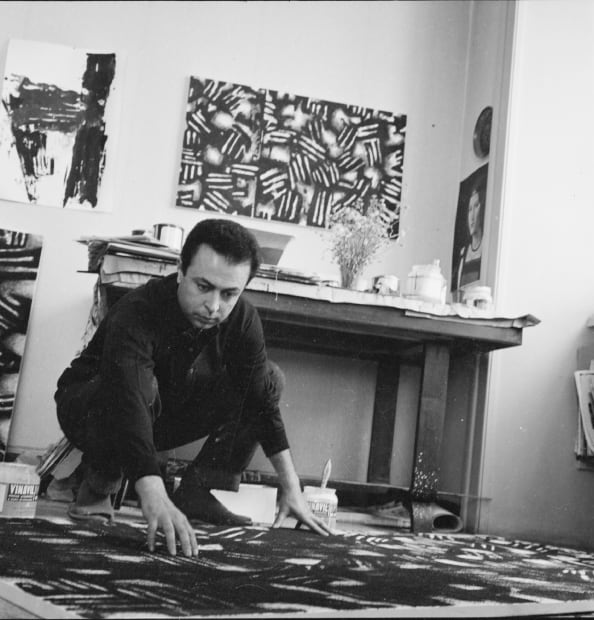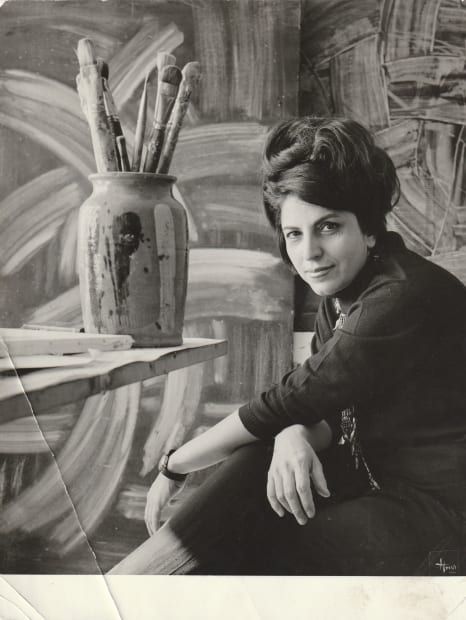
Mohsen Vaziri Moghaddam (1924 – 2018) is acknowledged as a pioneer of Iranian abstractionism and a leading figure in developing contemporary Iranian art. He studied at the Academy of Fine Arts in Rome. He was also an educator, opening the way for many to-be artists to go beyond the limits of established ways. His "Drawing Method and Painting Guide" (1981) is today's standard academic text.
He is widely recognized for works spanning five decades, from the painterly abstracts of the 1960s to the hard-edged geometry of the sculpted and painted aluminum wall reliefs of his later years. Vaziri's work is characterized by a restless experimentation of form through materials -- deployed in his drawings, sand paintings, opto-kinetic sculptures, and painted aluminum wall reliefs.

This website uses cookies
This site uses cookies to help make it more useful to you. Please contact us to find out more about our Cookie Policy.